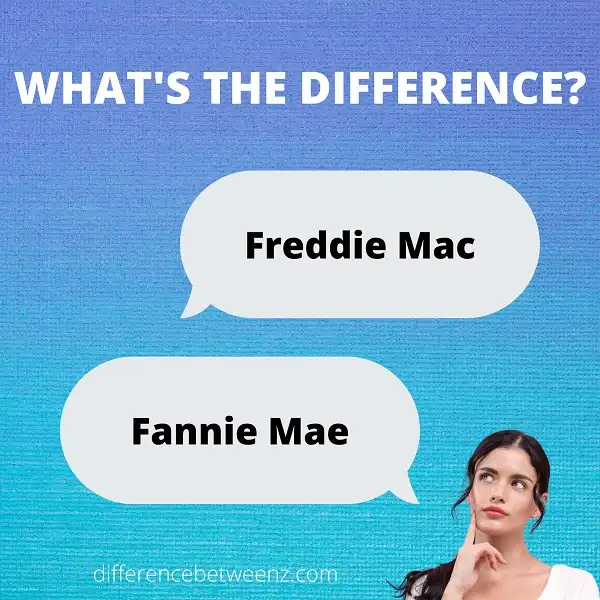Freddie Mac and Fannie Mae are two of the most well-known mortgage lenders in the United States. While they both offer certain benefits, there are some key differences between the two companies that borrowers should be aware of before choosing a lender. In this blog post, we will explore those differences and help you decide which lender is right for you.
What is Freddie Mac?
Freddie Mac is a government-sponsored enterprise (GSE) that was established in 1970 to provide stability and affordability to the U.S. housing market. Freddie Mac purchases mortgages from lenders securitize them and sell the resulting mortgage-backed securities (MBS) to investors. This helps to provide liquidity to the mortgage market and provides funding for new home loans. Freddie Mac also offers a number of other services, including credit enhancement for MBS, early payment default insurance, and servicing support for single-family loans. Freddie Mac is one of two GSEs that were created by the federal government to promote homeownership; the other is Fannie Mae. Together, Freddie Mac and Fannie Mae are known as the “government-sponsored enterprises” or “GSEs.”
What is Fannie Mae?
Fannie Mae is a government-sponsored enterprise (GSE) that was created in 1938 to provide liquidity, stability, and affordability to the mortgage market. Fannie Mae purchases securitizes and guarantees residential mortgages originated by private lenders. This secondary market activity increases the availability of financing for homebuyers and results in more competitive pricing for loans. Fannie Mae also operates a Delegated Underwriting and Servicing (DUS) program whereby it delegates the underwriting and servicing of certain loans to participating lenders. The DUS program provides competitive pricing, broad access to credit, and enhanced customer service for Fannie Mae’s business partners. Fannie Mae’s ultimate goal is to make housing affordable for all Americans.
Difference between Freddie Mac and Fannie Mae
Freddie Mac and Fannie Mae are government-sponsored enterprises (GSEs) that purchase residential mortgages from lenders and package them into securities that are then sold to investors.
- Freddie Mac and Fannie Mae were created by the federal government in order to provide stability in the housing market and to make homeownership more accessible to Americans. Both organizations are regulated by the Federal Housing Finance Agency (FHFA).
- Freddie Mac and Fannie Mae purchase mortgages from lenders, but they do not lend money directly to home buyers. Instead, the GSEs sell the mortgage securities they create to investors on the open market. Freddie Mac and Fannie Mae use the proceeds from these sales to buy more mortgages from lenders, which helps to keep money flowing through the housing market.
- The two GSEs differ in a few key ways. For example, Freddie Mac requires that borrowers have a minimum credit score of 620, while Fannie Mae requires a minimum credit score of 580. Additionally, Freddie Mac offers several loan programs that are not available through Fannie Mae, such as loans for manufactured homes and loans for investment properties.
- Despite their differences, Freddie Mac and Fannie Mae share the same ultimate goal: to make homeownership more accessible and affordable for American families. By working together, these organizations help to ensure that the dream of homeownership is within reach for everyone.
Conclusion
Freddie Mac and Fannie Mae are two of the most important companies in the United States housing market. Their role in the market is to buy mortgages from lenders, package them into securities, and sell them to investors. This helps keep money flowing into the mortgage market, which helps homeowners get loans and keeps interest rates low. The difference between Freddie Mac and Fannie Mae is that Freddie Mac is a government-sponsored enterprise (GSE), while Fannie Mae is a publicly traded company.


